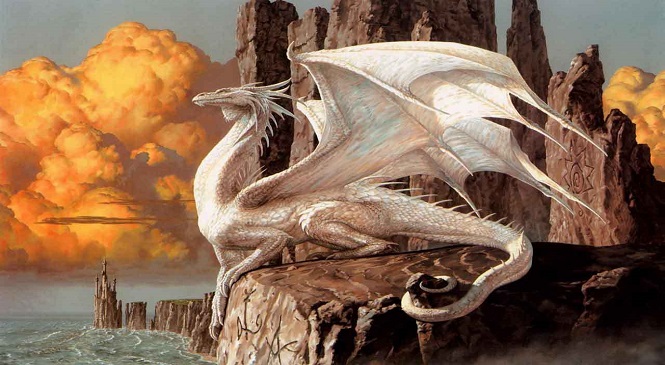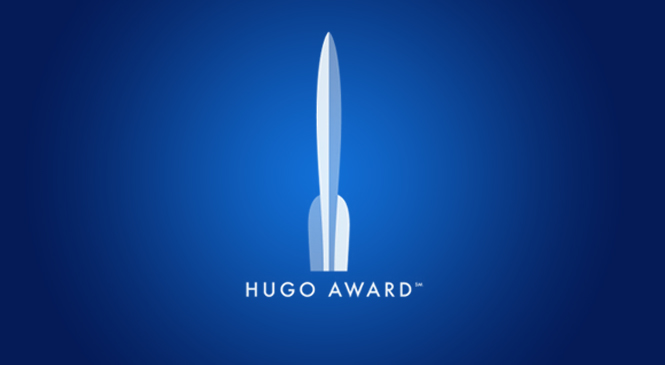Happy National Dragon Day!

One of the most popular creatures to show up in fantasy is the dragon. So today, in honor of National Dragon Day (January 16), let us take a look at why this mythical creature is so popular and how it became a dominate character in mythology.
First, what is a dragon?
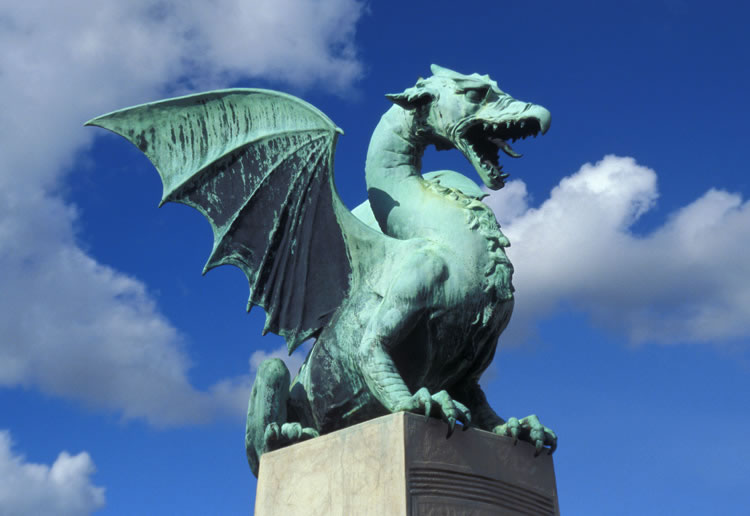
The general definition is a legendary creature, usually scaled, fire spewing critter with serpentine, reptilian, or avian traits, hatching from eggs. Depending on which area of the world you are in will better determine how they look. For instance, a European dragon tend to be depicted as a reptilian creature with animal level intelligence, four legs and wings (and in some cases, multiple heads). Most Asian dragons are serpentine (snake like) with four legs and no wings. They also are commonly described as living in rivers, or having an underground lair, possibly even hoarding treasure. Other than that, any special distinctions depend on the culture.
But if dragons do not exist, then how do people know what they look like? What inspired them to create these descriptions?
If you didn’t know what a dinosaur was and found a collection of massive bones that did not resemble any creature you had ever seen, why not assume they are the dragons in your culture’s mythology? Initial descriptions of the critters tend to be a mixture of various crocodiles, snakes, and salamanders. But like the idea that humans have inherited and evolved the characteristics of monkeys, the same is believed of dragons in regards to snakes, large cats, and birds of prey. From there, they adapt the cultural and literary expectations of the individual cultures and religions.
Let us look at the two major different cultures and break it down from there.

Eastern Culture
In many Asian cultures, dragons are considered as representatives of the primal forces of nature, religion and the universe. They are connected with wisdom, often said to be wiser than humans which also includes the ability to speak. In some of the traditions, it is said that dragons taught humans how to speak. They are also associated with longevity, very long lives, if they do die of a natural cause versus killed. It is also common for them to possess supernatural powers, magic.
The variances of dragons’ powers change with the different Eastern cultures. For instance, dragons are the highest-ranking animal in the Chinese animal hierarchy, strongly tied in with the emperor, representing power and majesty. They are also believed to be generous Chinese folklore. Hindu dragons are more of a cobra, a naga, and controlling water and rain, thus also fertility. Women in south India worship the nagas, giving offerings, believing to help with expanding and protecting their family, bringing prosperity. In Buddhism, nagas are more similarly related to the Chinese dragons, still in the form of a cobra, but may also have several heads. They can also use their magic to take the form of humans and have even been protectors of Buddha.

In the Japanese culture, they dragons are also water deities, large wingless serpentine creatures with clawed feet, associated with rainfall and bodies of water. Vietnamese culture believes the dragons also bring rain but similar to the Chinese culture, they represent the emperor, the prosperity, and the power of the nation. Also, similarly, it represents the symbol of yang, the universe, life, existence, and growth. The dragons are descended from a dragon and fairy. Filipino dragons are snake=like mermaids that can take human form, only evil toward humans if they are mistreated.

Western Culture
Most Western dragons are depicted similarly to Eastern dragons except they usually have wings. Before the spread of Christianity through the Western world, they were also viewed similarly to the East. However, that changed, taking a more sinister version created to represent Satan. In medieval times, most people knew of dragons from the Bible, from the Book of Job, chapter 41, Leviathan:
“I will not fail to speak of Leviathan’s limbs, its strength and its graceful form. Who can strip off its outer coat? Who can penetrate its double coat of armor? Who dares open the doors of its mouth, ringed about with fearsome teeth? Its back has rows of shields tightly sealed together; each is so close to the next that no air can pass between. They are joined fast to one another; they cling together and cannot be parted. Its snorting throws out flashes of light; its eyes are like the rays of dawn. Flames stream from its mouth; sparks of fire shoot out. Smoke pours from its nostrils as from a boiling pot over burning reeds. Its breath sets coals ablaze, and flames dart from its mouth” (NIV).
The church created legends of righteous and godly saints battling and defeating Satan in the forms of dragons. It was believed they could breathe fire because they had their mouth was of hell. Artwork would depict the need to pass through the monster’s mouth to enter Hell, with flames and smoke.
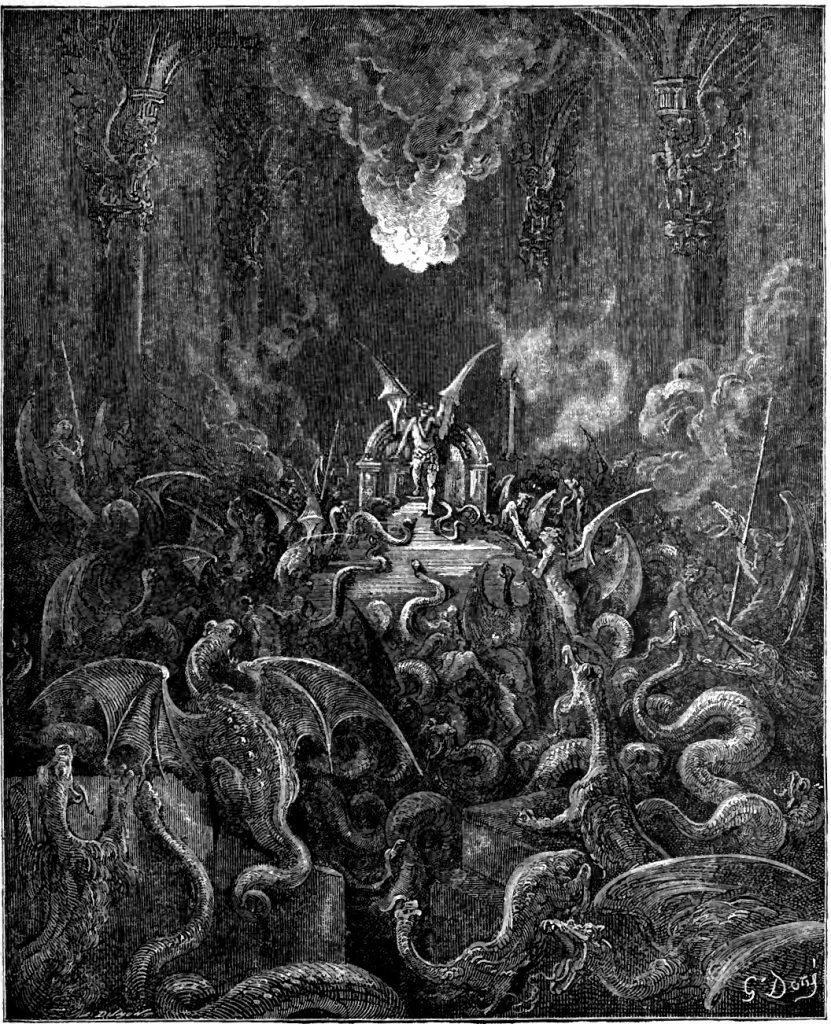
Of hissing through the Hall, thick swarming now
With complicated monsters.
Paradise Lost, John Milton
Gustave Dore
The first mention of dragons in ancient Greece was Homer’s Iliad with Agamemnon described having a blue dragon motif on his sword belt and a three-headed dragon on his breast plate. These dragons were also described with having tusks like large swine’s, grow to great lengths, and long life spans.
In Eastern Europe, dragons usually had multiple heads, which could possibly grow back if they were cut off. Because they were so vile, according to Slavic myth, even Mother Earth would not allow them back into her ‘womb’ and have to remain above ground for all of eternity. The blood of a dragon is poisonous, acid-like, which could burn through armor and skin. Only in German legend is dragons blood useful for humans, with the power to have skin or armor bathed in it invincible.
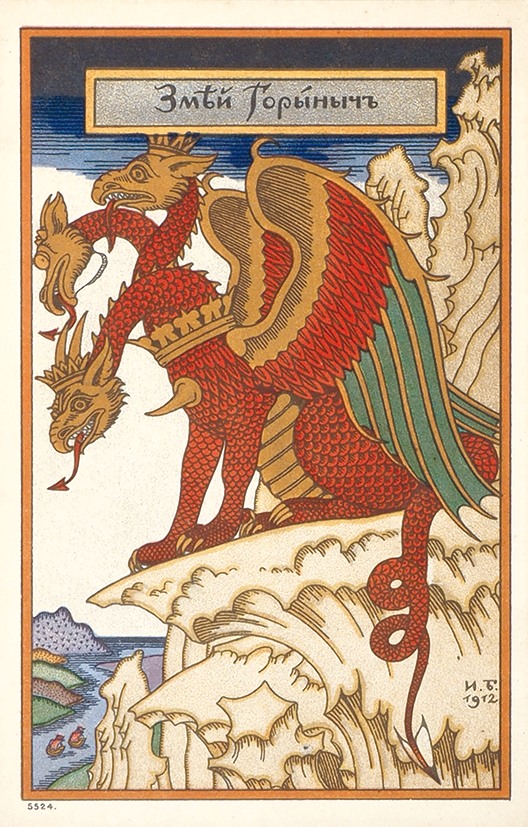
What about modern dragons; do they exist?
In our current culture, dragons are in our literature, games, and large and small screens as folklore. These forms of modern day mythology will be passed down from generation to generation. The stories are usually in fantasy setting versus the mechanical world we currently live in, even though there are a few stories that blend machines with magical creatures, like Reign of Fire, The Dragonriders of Pern series, Harry Potter, and even Godzilla. People are enamored by dragons, the beauty of their imagery, the magic they can perform, and even as scary as they may look, the pureness their hearts can possess. They can be muses, a formidable opponent. or simply a part of the landscape.
Now I could go through a list of notable dragons, but instead I’m going to list some of my favorites.
Saphira
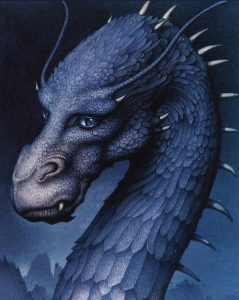
I want to start with the Inheritance Cycle by Christopher Paolini. In short, these books follow Eragon, who discovers one of the last remaining dragon eggs in Alagaesia, which hatch for him (they hatch for only their true rider). Together, he and Saphira fight the evil Galbatorix and free the people of his land. Of course, more happens, without giving away too much, but Saphira is a beautiful, blue dragon with the pureness (and fun) of a child’s heart that matures through the books. The bond with Eragon continually grows throughout the story. Unfortunately, there is more I would love to say to support my love of dragons here even more, but I do not want to spoil it for any future readers.
The Harry Potter World
Next, how can one not think of the wizarding world of Harry Potter? J.K. Rowling peppers the books with dragons. Hagrid tries to raise a dragon. Ron’s brother, Charlie Weasley works with dragons in Romania. Cornelius Fudge suggested using dragons to guard the school after removing the Dementors. There is a dragon in the wizard bank, Gringotts. Harry has a challenge against a dragon in the Tri Wizard Tournament.
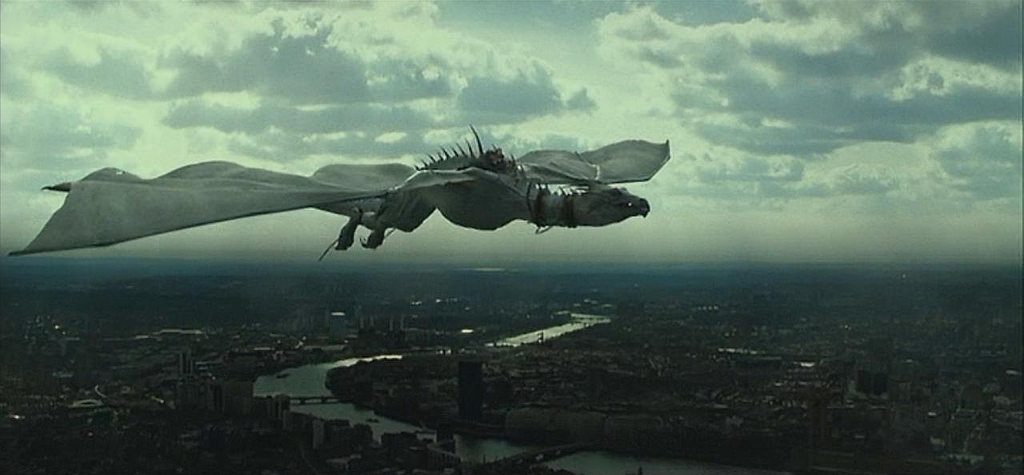
In fact, Harry, Ron, and Hermione rode a dragon. However, dragons are not just used when they are alive. Their blood, claws, eggs, and heart strings, to name a few, are listed throughout the books as material need or used in the wizarding world.
Drogon

Who can ignore our cultured current obsession with the Daenerys Stormborn of the House of Targaryen, First of her Name, the Unburnt, Queen of the Andals and the First men, Khaleesi of the Great Grass Sea, Breaker of Chains, and Mother of Dragons’ three little pets. The Queen of England has her corgis, Dany has her dragons. In George R.R. Martin’s A Song of Ice and Fire series, the Khaleesi is the last of her house, who controlled dragons years before her birth and were killed off. She has three eggs hatch for her and are loyal to her, especially her black dragon, Drogon, name after her Khal Drogo. The moment that she takes flight with Drogon is breathtaking and makes a nervous readers a little jealous.
Hiram McDaniels

Even though I work for the hooded figures in Nightvale, I will cautiously say, I did vote for Hiram McDaniels. I do understand that most likely by the end of the day, an envelope will show up under my door and I will join my fellow interns in the dog park. But until then, just know I am the third longest living intern behind current Mayor Dana, the Intern and Kareem. All Hail the Glow Cloud. (Hiram is a five headed dragon featured on the podcast Welcome to Nightvale, terrified the town, and then unsuccessfully ran for mayor. Too many arguments between the heads.)
Albi, The Racist Dragon

A group I thoroughly enjoy, the New Zealand duo Flight of the Conchords has a song from their Folk the World Tour Live album released in 2002 called Albi. Albi is a racist green dragon who lives in a marmalade forest between the make-believe trees, in a cottage cheese cottage (of course). The song is the story of his exile and redemption and the little Albanian boy. In only the way the Jemaine Clement and Bret McKenzie can tell the story.
Smaug

Speaking of Bret McKenzie, while most people were enjoying his portrayal as an Elf in The Hobbit films, they may have missed that other character, Smaug, the primary antagonist of J.R.R. Tolkien’s book. The last of the dragons of Middle Earth, he seized the mountain containing the dwarf treasures, scorching the area around the Lonely Mountain into a wasteland. This “most specially greedy, strong, and wicket worm” provides a great piece of entertainment, which makes it hard to remember him as the bad guy.
Deathwing

This is where the gamer comes out. For years, my life was shaped by this particular dragon who was originally thought dead, but not. In World of Warcraft, Deathwing the Destroyer was one of the five Dragon Aspects, driven mad, turning against the other Aspects, hid himself within the Alliance, and turned his greatest enemy into a slave of the Horde. After setbacks and defeat from the other Aspects, he disappeared only to return in Cataclysm, the third expansion to World of Warcraft. As an achievement freak in game, being killed by Deathwing gained you the Stood in the Fire achievement. At any time he could spawn in either Kalimdor or the Eastern Kingdoms, killing anything in his path. If you were lucky enough to have your toon there and die, congratulations to you! Many night I followed the rumors from various gaming blogs that his route is not as random as Blizzard claims it to be. However, it is one I never did achieve sadly. Maybe one day.
And finally…..
Falcor

FAAAAAAAAAAALLLLLCOOOOOOOOR! Who can forget Atreyu’s traveling companion, Falcor the luckdragon from The Never Ending Story? He’s like a flying dog who helps Atreyu discover a sense of bravery and becomes his very best friend. As a child, I wanted Falcor to show up and fly me off. Always optimistic, friends, helpful and wise. As he always says, “never give up and good luck will find you.”
All right, it’s your turn. Leave us a comment and let us know some of your favorite dragons.
![]()

